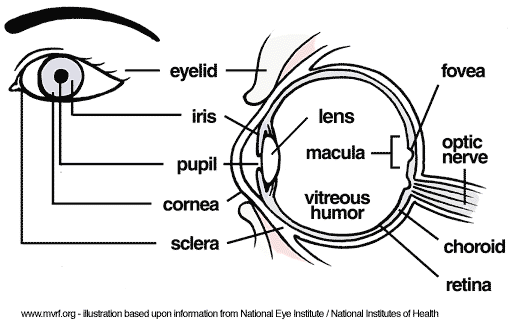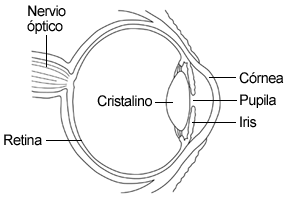| |
The anatomy of the eye is important to examine when studying eye diseases
 __ __
English------------------------------------------------------------------------------ Español
- RETINA is a light sensitive layer that lines the interior of the eye. It is composed of light sensitive cells known as rods and cones. The human eye contains about 125 million rods, which are necessary for seeing in dim light. Cones on the other hand function best in bright light - there are between 6 and 7 million in the eye - they are essential for receiving a sharp accurate image; cones can also distinguish colors. The retina works much in the same way as film in a camera.
- MACULA is a yellow spot on the retina at the back of the eye which surrounds the fovea. This is the area with the greatest concentration of cone cells, and when the eye is directed at an object, the part of the image that is focused on the fovea is the image most accurately registered by the brain.
- LENS is a transparent structure situated behind the pupil of the eye and it is enclosed in a thin transparent capsule. It helps to refract incoming light and focus it onto the retina. A cataract is when the lens becomes cloudy, and a cataract operation involves the replacement of the cloudy lens with a man made plastic lens.
- OPTIC NERVE leaves the eye at the optic disk, and transfers all the visual information to the brain.
|